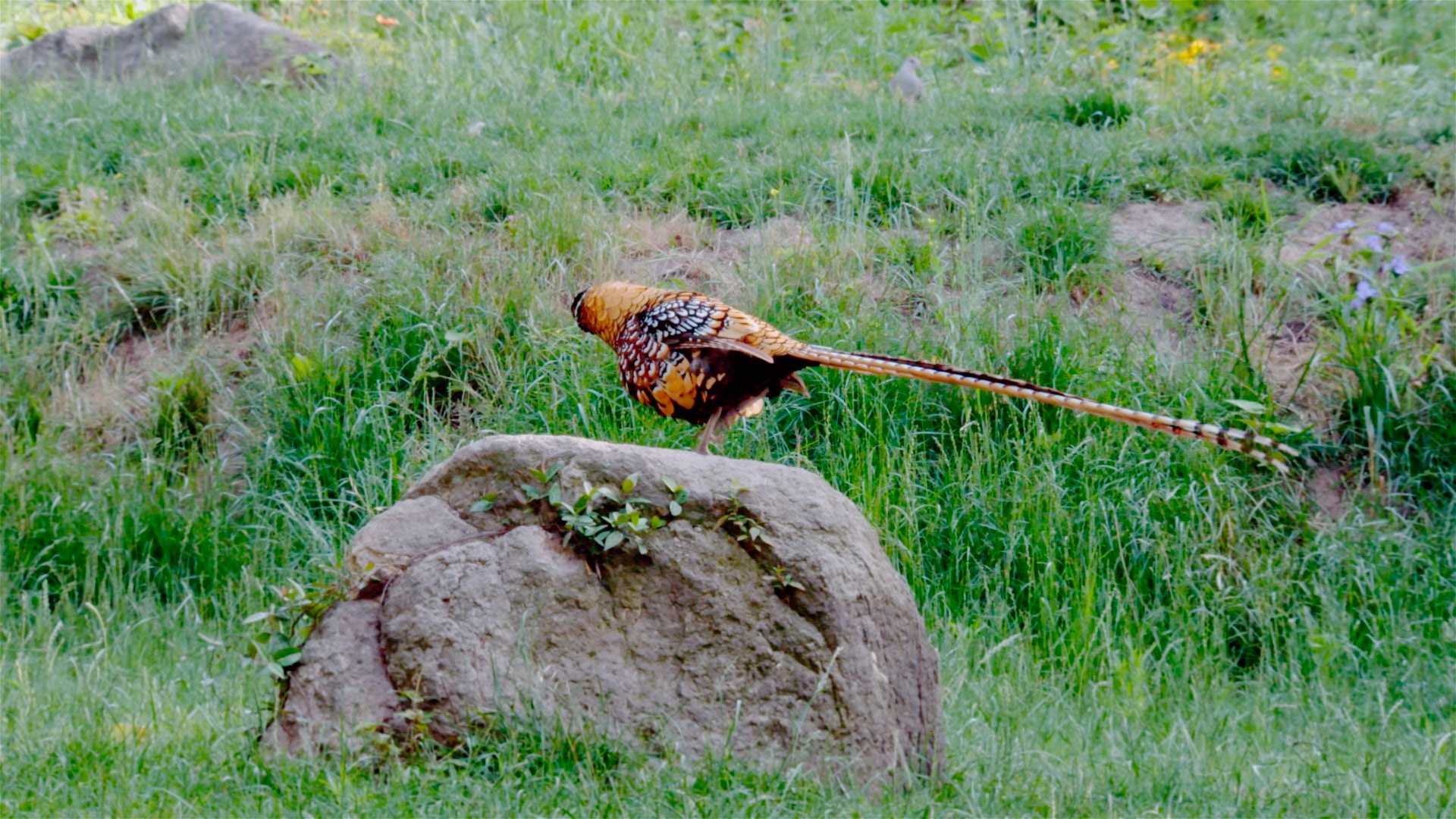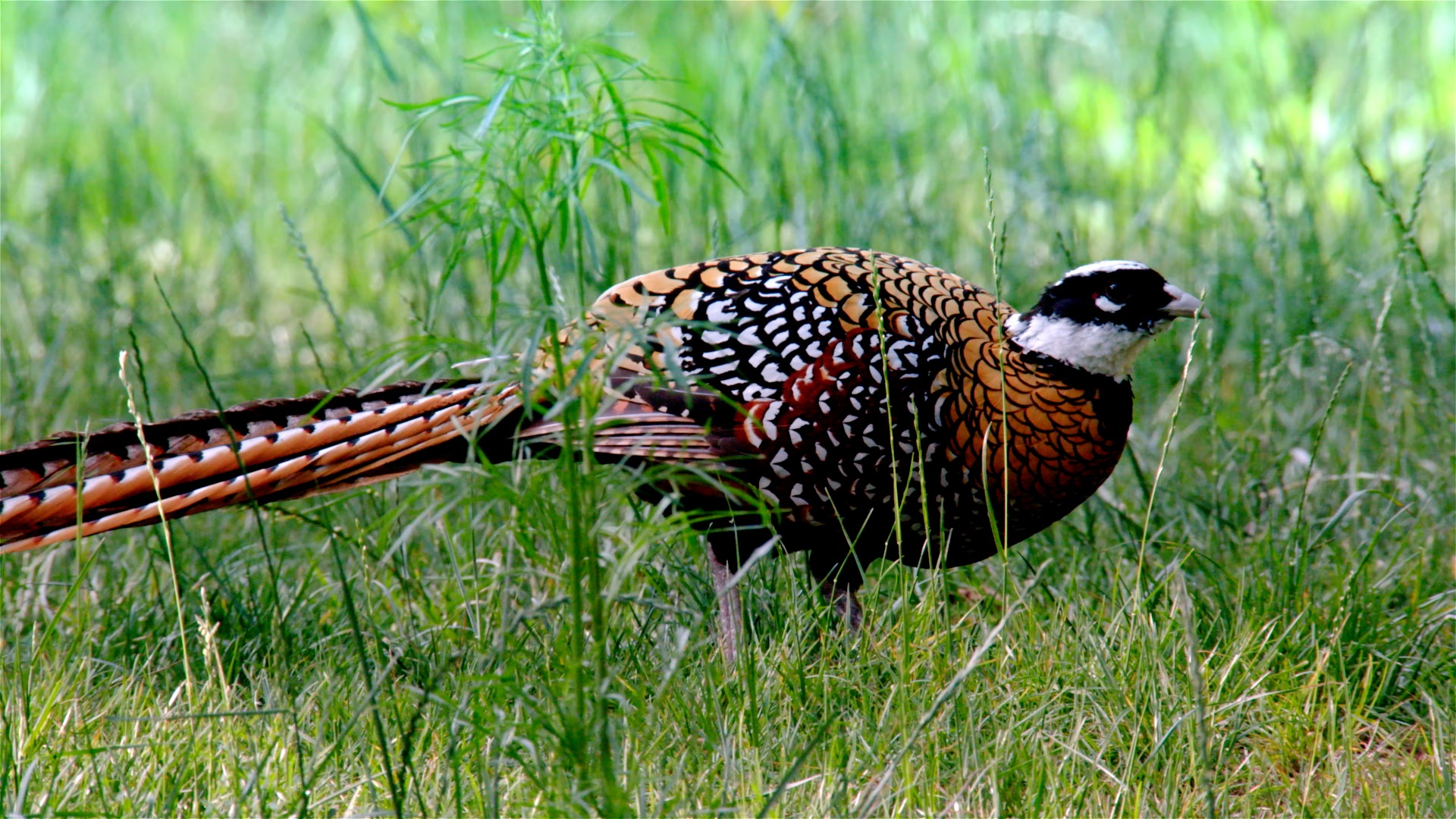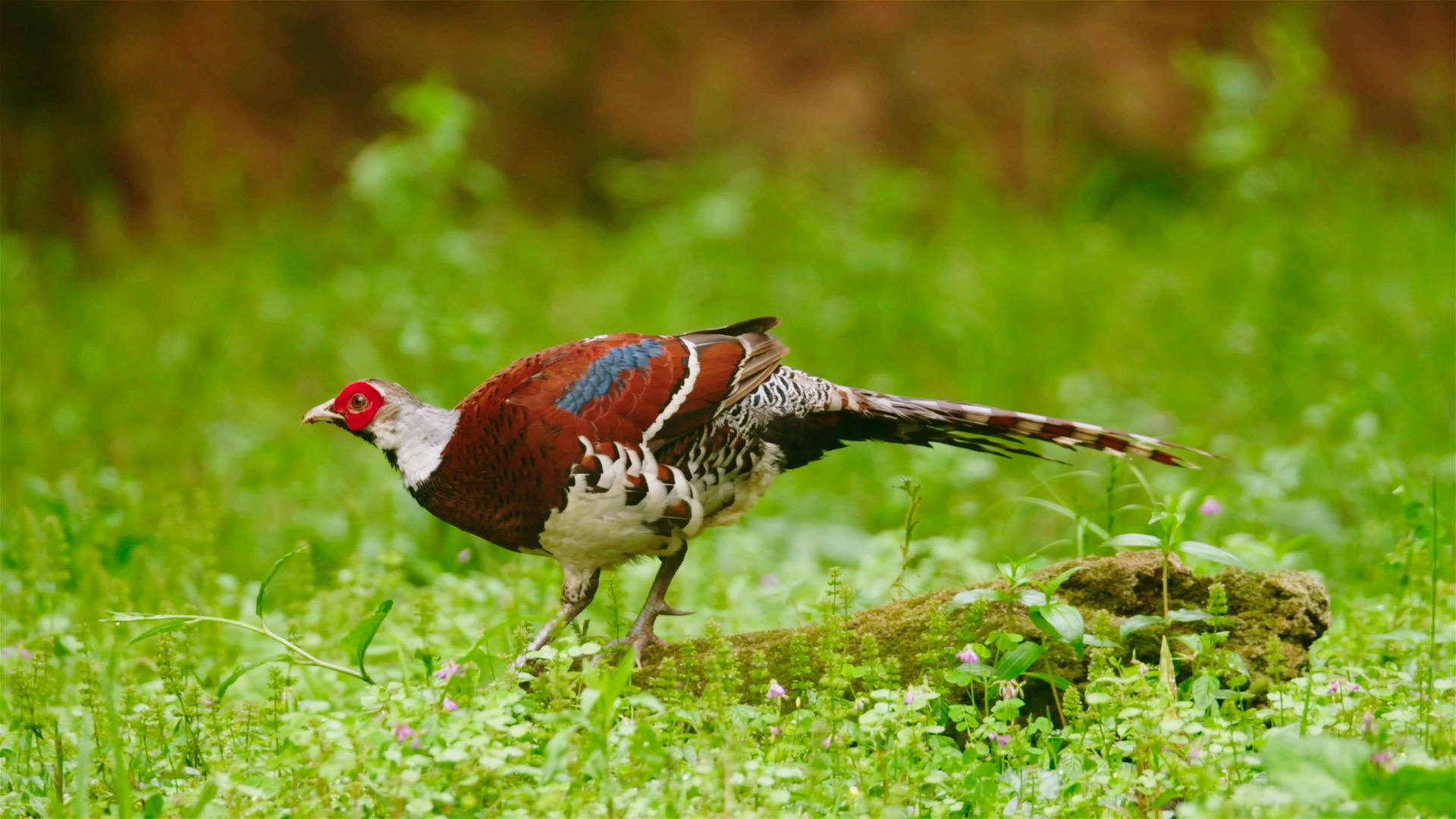Look at the pheasant pictured above, have you spotted anything unusual? The pheasant's tail is almost twice as long as its body!

It looks like a big ball with two long "sticks"...
It looks like a big ball with two long "sticks"...
The super long tail is a distinctive characteristic shared by three pheasants in China's national protected animal namelist: Elliot's pheasant, Reeves's pheasant and Mrs. Hume's pheasant. In Chinese, they are all called "chang wei zhi," meaning "long-tailed pheasant." The CGTN Nature film crew has shot stories about two of them:
01:15

The Reeves's pheasant has the longest natural tail feather of all birds worldwide. A male's tail can measure over two meters. The super long tail is a precious treasure for the bird: the longer tail a male possesses, the more likely it would be preferred by females, as a long, neat tail suggests good health and excellent ability to survive.
00:55

The Elliot's pheasant is a responsible parent. It will take good care of children, feeding them six to seven times a day. For the whole story of the Elliots's pheasant family living in Wuyi Mountains, east China, click here.
The Mrs.Hume's pheasant has a brighter combination of colors. The metal blue neck and vibrant red face form a sharp contrast. Mrs.Hume's pheasant can also be found in India, Myanmar and Thailand.
Elliot's pheasant, Reeves's pheasant and Mrs. Hume's pheasant – if you forget the names, just remember the much easier one: chang wei zhi, "long-tailed pheasants" in China!
About Rare Animals in China
How many rare animals in China can you list? The giant panda, red panda, snub-nosed monkey, snow leopard? We want to make sure you can name 100 or more.
China is home to rich biodiversity. This series will focus on the rare animals that inhabit China. Under national protection, they need us, and the first step of protection is to know who they are.
(Video clip credits to CGTN Nature film crew. Cover design by CGTN's Chen Yuyang)
(If you want to contribute and have specific expertise, please contact us at nature@cgtn.com.)